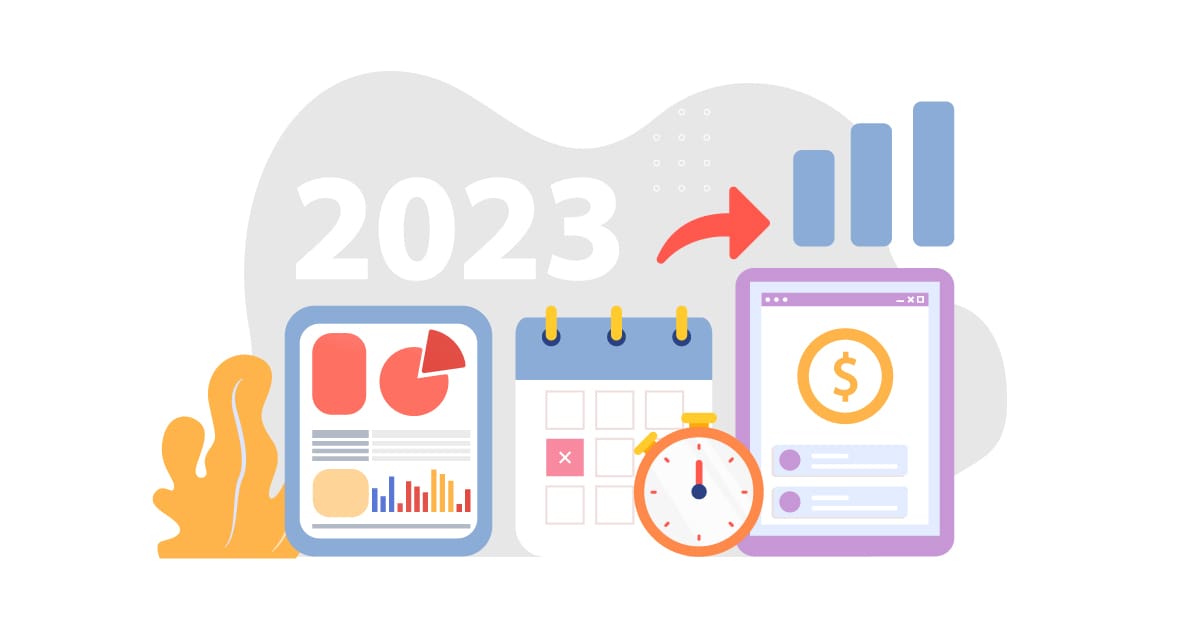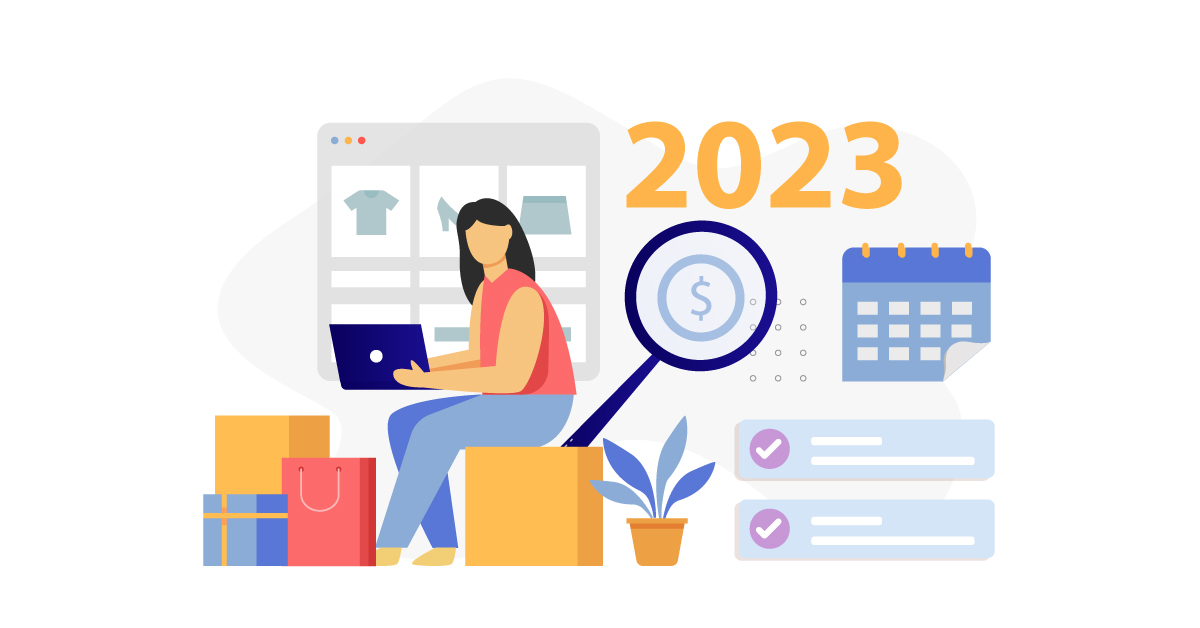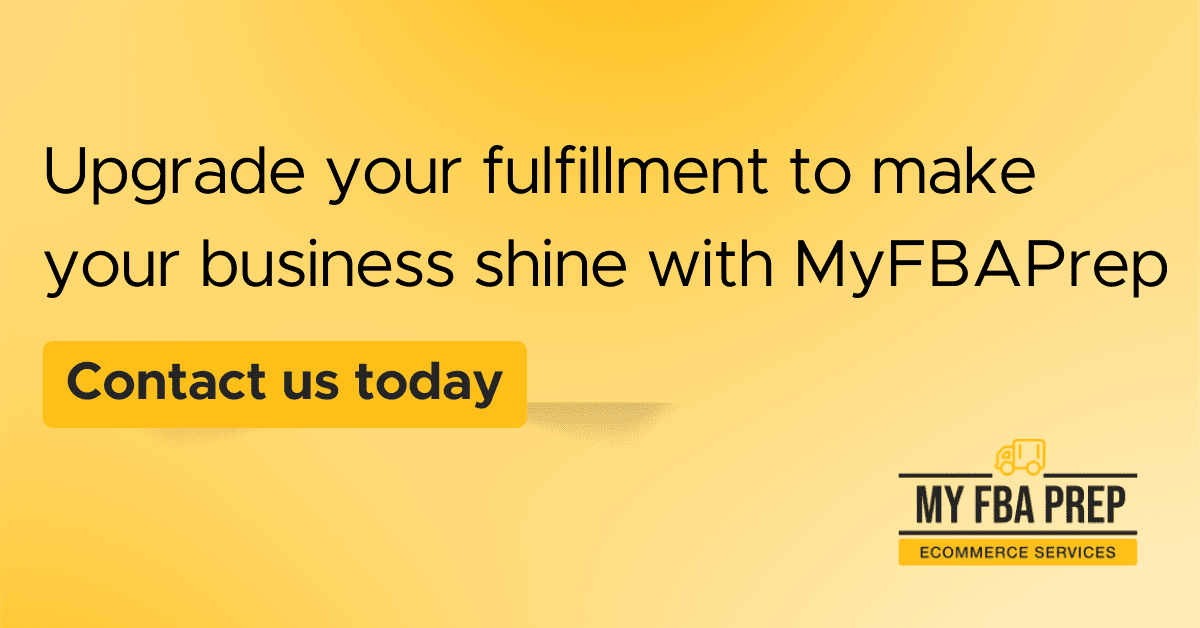
Leverage Automation to Make 2023 Your Best Year Yet

Automation has become a buzzword in the online selling community. As an eCommerce seller with an endless to-do list, you’re probably wondering:
- Does automation really live up to the hype?
- Is automation appropriate for my growth stage?
After all, 80% of businesses that are yet to hop on the automation train believe it isn’t necessary for them.
But the stats say otherwise. For example, 72% of successful eCommerce businesses use marketing automation, and 31% of businesses’ main reason for using marketing automation is to improve their customer experience.
Automation can provide an excellent vehicle to get out of the hamster wheel of work to scale faster and more affordably. Below, we’ll share why leveraging automation should be a priority in your eCommerce business and the key areas to automate for more success in 2023.
Got a haphazard fulfillment process? Discover how MyFBAPrep can get you organized.
The benefits of harnessing automation in online selling
You don’t need to look far before you find someone singing the praises of eCommerce automation. But why? Let’s break down why automation has become a favorite among online sellers.
Grow your business in your sleep
Arguably, the best eCommerce automation benefit is that it helps reclaim your time. The expansive capacity and durability of tech solutions allow you to multiply yourself in essence. As a result, your store stays productive around the clock.
For example, in lifecycle marketing, you can automate welcome email sequences, abandoned cart emails, and win-back campaigns.
Need help upgrading your fulfillment strategy? Speak with a MyFBAPrep expert.
Make your stores more secure
Security in eCommerce payments remains a big issue. Global eCommerce payment fraud is expected to hit $41 billion in 2022 and $48 billion by 2023.
With automation, boosting security in your store doesn’t require manual 24-hour surveillance. From multifactor authentication to 3D encryptions, there’s a growing list of tools you can use to automate security checks and prevent breaches. And thanks to the advent of AI in security, many solutions are better at spotting and predicting threats than humans.
Build stronger customer experiences and relationships at scale
We know forging stronger customer connections is a surefire way to grow your leads and sales and secure repeat business. There are just two problems; time and energy, or a lack of them. Automation can make it easier to stay in touch with your target market and develop stronger ties, even when you’ve got a small team.
Increase profits
As expenses like ad costs and shipping continue to rise, it’s essential to find more ways to boost profits in your eCommerce business. Automation tools that improve things like customer experience, personalization, conversion rate, and ad spend optimization all help you build a healthier store and strengthen its bottom line.
Eliminate repetitive tasks from your task list
Sometimes mundane admin tasks can creep up and fill your to-do list, leaving you shuffling (virtual) papers instead of focusing on scaling. But some admin is critical to your business’ success; think customer support and accounting, so it can seem like you’ve either got to DIY or outsource. The truth is, you don’t have to do either. Automation tools can take over manual admin tasks. In turn, you’ll have more downtime to mastermind your next winning product.
Must-have automation solutions for a bumper 2023
When you’re just getting started in eCommerce automation, the endless options can be overwhelming. To avoid analysis paralysis, we’ve put together the key areas to focus on in your eCommerce automation journey to see major wins:
Sales
Sales automation involves running business-driving activities with technology to increase nurture leads, accelerate sales cycles, and increase conversions. Some areas to automate in your sales include:
- eCommerce personalization solutions: Personalization software helps you enhance customer shopping experiences with timely product recommendations and offers. Some top personalization solutions are Segment.io, Nosto, and Personyze.
- Customer engagement tools: These solutions help you keep conversations flowing with your target market and existing customers to make closing sales easier. Check out platforms like MoEngage, Userpilot, and Braze to level up your customer engagement stats.
- Conversion rate optimization (CRO) platforms: From plugins that host upsells and cross-sells to solutions that suggest alternative items to shoppers when a product isn’t available, countless solutions can drive more sales from your traffic. Try solutions like CrazyEgg, OmniConvert, and HotJar, to make your store more fruitful.
- Cart abandonment: Did you know the average cart abandonment rate sits at 69.99%? Luckily, you can recoup some of these would-be sales by using tools that remind shoppers of their baskets and entice them to return. Some solutions also break down insights on issues that could be causing problems at checkout. Tools to implement include Millimetric.ai, CartStack, and Rejoiner.
Marketing
Marketing automation covers all the tasks you find, attract, engage, and reengage leads. When done correctly, marketing automation can have a massive impact on your store’s growth. Here are the top areas to automate in your marketing strategy.
- Email marketing: Use solutions to schedule and trigger emails according to actions a lead or customer takes once in your eCommerce ecosystem. For example, they respond to a survey and buy a particular product. Some favorites among eCommerce brands include Klaviyo, Omnisend, and ActiveCampaign.
- Content management: The onboarding tools that allow you to share and optimize are growing, going from 21% in 2021 to 29% in 2022. It’s essential to update your content to keep it fresh and relevant. Try solutions like Buzzsumo, Contentful, and Sanity to distribute content fast, track results, and tweak your approach to build a cohesive brand voice and look.
- Ad management and optimization: These days, you can use tech tools to drive more conversions. For example, you can use AdTech to segment audiences based on their behavior and run more relevant campaigns for them. You can also use the tools to upgrade content and drive growth. Some solutions include StackAdapt, Demandbase, and Yieldify.
- Social media: You can use automation to carry out tasks like social listening, post-scheduling, and analytics. Lean on solutions like Social Sprout, Phlanx, and Loomly for a well-rounded social media tech stack.
- Reviews: Securing user-generated content via reviews is eCommerce gold and can Generate UGC on autopilot and in different formats by tapping into review automation solutions like Opinew, YotPo, and Birdeye.
- Referrals: Referrals are one of the cheapest ways to scale your business. However, securing and managing them manually can be time-consuming. Use solutions like Referral Candy, MentionMe, and NiceJob to incentivize participation and place your customers in the driving seat.
Customer service
Customer service automation entails systematizing and powering tasks related to customer support. Some tools you can use to ensure peak productivity in your customer service initiatives are:
- Customer service management system: Utilize features like ticketing and automated responses to increase customer satisfaction and issue resolutions while reducing team workload. Some tools to look into are Zoho, Zendesk, and LiveAgent. You can also help agents be more productive with customer management solutions like Sprinklr and Scoro.
- Live Chat: Set up virtual assistance support agents and bots before, during, and after checkout to guide shoppers through their buying journey and offer post-sale support. You can get started using solutions like Olark, Tidio, and LivePerson to optimize your checkout process.
Security
Security automation allows you to implement, monitor, and upgrade your store’s online defenses. From firewalls to biometrics, it’s best to take a multifaceted approach to automate security. Here are some key tools to consider:
- 3D Secure payment solutions: 3D Secure solutions add an extra security layer for online card payments. Implement payment solutions that support 3D secure integrations or card brands like TrueLayer, Stripe, and PayPal.
- Firewalls, anti-virus, and anti-malware tools: With cybercriminals finding new and innovative ways to attack, threats can come from all angles. Cover all your bases with a robust security stack from brands like Sucuri, Sqreen, Astra, Sitelock, and Cloudflare.
Admin
Admin automation covers all the backend tasks your business uses to operate. Some key tools to implement are
- Listing creation and management tools: Sell on multiple channels or have a large product portfolio? Seek help from a multichannel listing tool to upload compliant listings and manage their content. Some tools to look out for SixBit, SellBrite, and InkFrog.
- Repricing solutions: Use pricing tools to maintain competitive online and increase conversions. Solutions like Prisync, Price2Spy, PriceFX, and Vendavo can help.
- eCommerce operations management tools: From inventory management and optimization to accounting and warehouse management. There are many tasks to automate in your eCommerce ecosystem. The most comprehensive tools will monitor inventory levels, predict demand, optimize stock distribution, raise purchase orders, and set up automated online payments to suppliers for smooth replenishment. They’ll also help you stay on top of your purchase orders, due accounts, and finances. Some of the best solutions for this job are Skubana, Brightpearl, and Zentail.
Fulfillment
Fulfillment automation involves using technology to control the movement of goods from your manufacturers to your customers and back.
- Supply chain management: Automation is vital to maintain optimal inventory levels and organized order management systems. For best results, seek solutions that provide a real-time, 360-degree view of your supply chain, like Flieber.
- Warehouse management: You can also use robotics and AI-backed to manage tasks like unboxing and sortation. Look to providers like OPEX, EquinoxHME, and Berkshire Grey to get set up.
- Inventory optimization: It’s essential to work with stock management systems that update automatically to adjust your stock across all sales channels and provide insights to shape your stock purchases. Partnering with a 3PL or 4PL like MyFBAPrep is a great way to automate the messy part of logistics that no one really wants to touch, like picking and packing and reverse logistics. Just set your orders to send to any of our warehouses, and we’ll get items ready to go to customers without you even lifting a finger.
- Transport and delivery management: If you prefer to manage fulfillment in-house, use solutions like ShipStation, ShippingEasy, and Shippo, tap into tech solutions to gain visibility into your fulfillment process, share tracking information with customers fast, and manage carriers. Delivery management solutions like Urbantz and Track-POD can also help map out the optimal routes for deliveries to help you save time, fuel, and money.
- Returns management: Returns aren’t fun but come part and parcel with eCommerce. Make your reverse logistics process easy for shoppers and encourage them to come back with solutions like Return Rabbit, Loop Returns, Returnly, and Return Logic.
Wrapping up — Succeed with eCommerce automation
Whether you’re a fast-scaling business with a small or large corporation looking to skyrocket productivity, automation is a safe bet.
Using eCommerce automation, you can scale your business without exploding your workload and, in essence – get more done in less time, even if you’ve got a small team.
So investigate which areas your business could benefit from some extra attention to improve performance and start to implement complementary solutions first. Once you’re getting results in these key areas, expand your automation use.
Soon you’ll be able to grow your business, lowers costs, and keep customers happy independent of your time and output.



